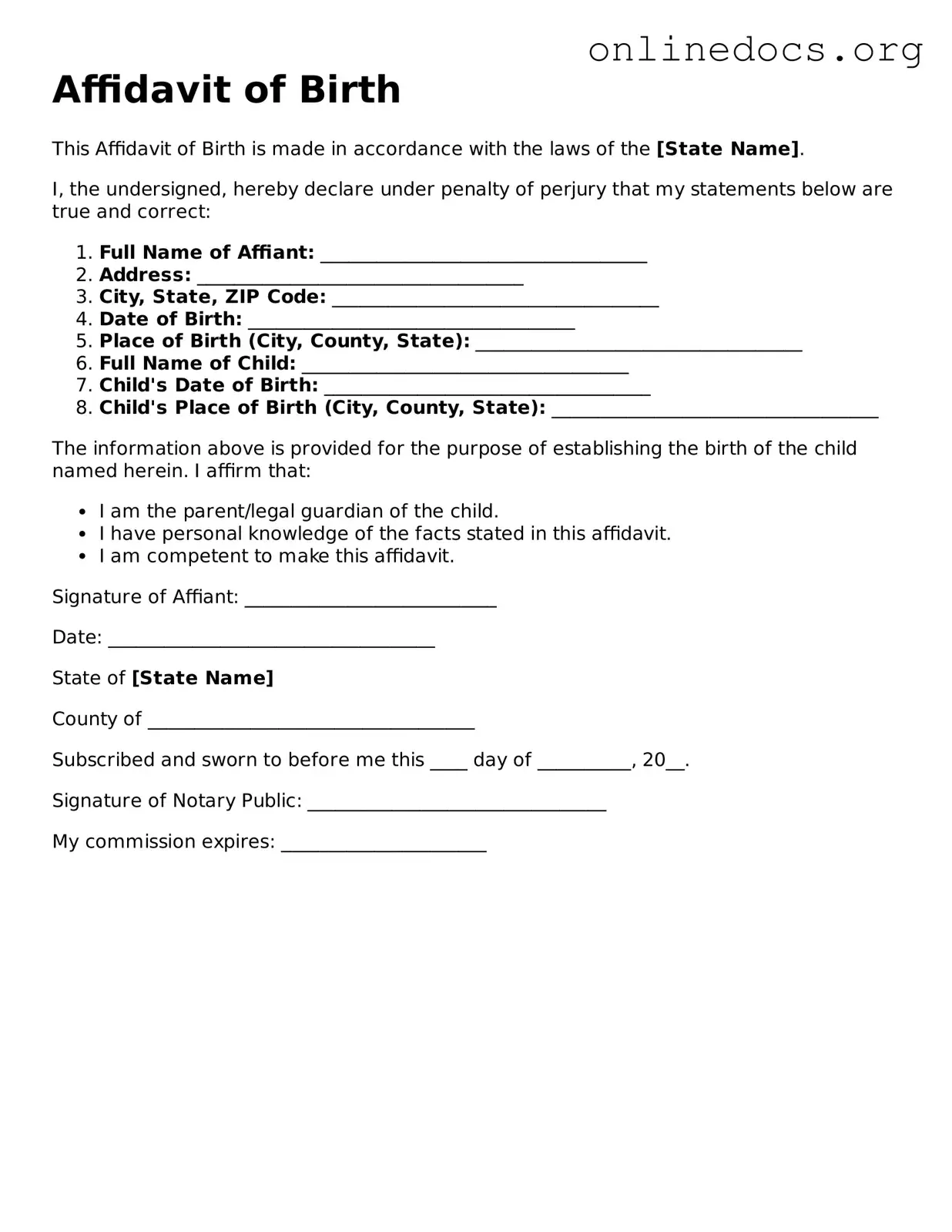The Affidavit of Birth form is often compared to a Birth Certificate. A Birth Certificate is an official document issued by a government authority that records the birth of a child. Like the Affidavit of Birth, it includes essential details such as the child’s name, date of birth, and parents’ names. However, while a Birth Certificate is typically issued shortly after birth, an Affidavit of Birth may be used when a formal record is lacking or when a child is born at home or in a non-traditional setting.
Another document similar to the Affidavit of Birth is the Certificate of Live Birth. This document is generated by hospitals or birthing centers and serves as a preliminary record of a child's birth. It contains similar information to both the Affidavit of Birth and the Birth Certificate. However, it is often used as a basis for obtaining a Birth Certificate, whereas an Affidavit of Birth may serve as a standalone document in certain situations.
The Declaration of Birth is also akin to the Affidavit of Birth. This document is often used in cases where a child’s birth was not registered in a timely manner. It serves as a sworn statement by the parents or guardians, providing the necessary information to establish the child's identity and date of birth. Like the Affidavit, it can be used to request official documentation when a Birth Certificate is not available.
The Affidavit of Parentage shares similarities with the Affidavit of Birth in that both documents establish legal relationships. The Affidavit of Parentage is used to confirm the identity of a child’s parents, especially in cases of unmarried parents. It can be crucial for legal matters regarding custody and support, just as the Affidavit of Birth is important for establishing a child’s identity and citizenship.
Another document is the Adoption Certificate. This is issued when a child is legally adopted and serves to record the new parent-child relationship. While it is different in purpose, both the Adoption Certificate and the Affidavit of Birth provide vital information about a child’s identity and familial connections. Both documents are essential for legal recognition of the relationship between the child and the parents.
The Affidavit of Birth form closely resembles the Birth Certificate in its purpose, serving as official proof of a person's birth when traditional documentation is lacking. In many scenarios, individuals may turn to an Affidavit when a Birth Certificate is not readily available, providing a credible alternative for establishing identity and citizenship during various legal processes.
The Consular Report of Birth Abroad is also similar. This document is issued to children born outside the United States to American parents. It serves as proof of U.S. citizenship and records the child’s birth details. Like the Affidavit of Birth, it is crucial for establishing citizenship and identity, especially for children born in foreign countries.
Finally, the Delayed Birth Certificate can be compared to the Affidavit of Birth. This document is issued when a birth is registered later than the typical timeframe, often requiring additional documentation to confirm the details of the birth. Both documents serve to provide legal recognition of a child's birth and identity when the standard documentation is not available or has been delayed.
